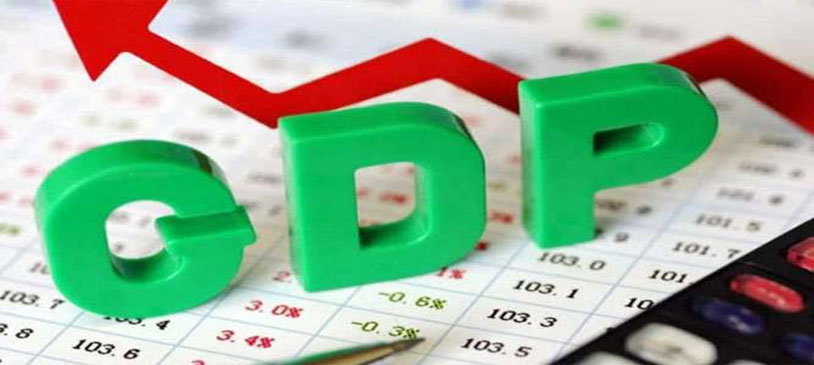New Delhi: India’s economy is forecast to grow 5% this fiscal, its slowest pace in 11 years, estimates released by the government on Tuesday showed, increasing pressure on finance minister Nirmala Sitharaman to announce measures to revive demand and boost investments in the upcoming budget.
The projected growth rate of gross domestic product (GDP) in FY20 is the lowest since FY09, the year of the global financial crisis, when GDP grew 3.1%.
It reflects a sharp decline from 6.8% in FY19 as the economy is hit by a broad-based slowdown, fragile consumer sentiment and stagnant investments.
The first advance estimates released by the National Statistical Office (NSO) on Tuesday suggest a tepid recovery in second half of the fiscal with implied growth at 5.2% against 4.8% recorded in the first half for an overall 5% rise in GDP.
“It gives a big jolt to the ambition of making India a $5-trillion economy by 2024-25. It is becoming harder to do so,” former finance secretary SC Garg said.
The CSO estimate is in line with the Reserve Bank of India’s projection of 5% growth and substantially lower than the 7% given by the Economic Survey for FY20. Gross value added (GVA) growth is seen at 4.9% against 6.6% in FY19.
Nominal GDP growth, without adjusting for prices, is estimated at 7.5% — a 42-year low according to SBI — well below the 11.2% recorded in FY19, which suggests muted corporate performance and subdued tax collections, and will add to fiscal pressure.
“The growth forecast is on expected lines and reinforces the general trend of slowdown,” said Madan Sabnavis, chief economist at CARE Ratings. “The private sector is not investing,” he said.
The government has already announced a number of measures to prop up the economy, including a sharp cut in corporate tax rate, support for stalled housing projects and Rs 102 lakh crore plan for infrastructure, but experts have asked for more in the upcoming budget.
“This is the time for fiscal measures… one needs to be pragmatic on macro policy,” said NR Bhanumurthy, economist at National Institute of Public Finance and Policy. “The slowdown in economic growth implies the government will have to come up with a fiscal stimulus in the budget.”
There are suggestions for cut in personal income tax to stimulate demand. Saugata Bhattacharya, chief economist at Axis Bank, suggested better credit delivery to lift growth.
“The key to a quick recovery is consumption,” said Soumya Kanti Ghosh, group chief economic adviser, SBI.
BROADBASED SLOWDOWN
Private consumption, which is the prime driver of the economy with about 60% share, is likely to grow at 5.8% this fiscal, down from 10% in the previous year.
Gross fixed capital formation, a measure of investments, is estimated to rise less than 1% in FY20, a collapse from near 10% rise in FY19.
Manufacturing growth was seen at 2% year on year, which is a 15-year low, as against 6.9% growth in FY19. Construction growth is seen slipping to a sixyear low of 3.2% in FY20 from 8.7% in the last fiscal.
Services sector is projected to slow to 6.9% in FY20 from 7.5% in FY19 and 8.1% in FY18.
The per capita net national income is estimated to be Rs 1,35,050 this fiscal, up 6.8% from Rs 1,26,406 in 2018-19. EARLY SIGNS OF RECOVERY? Experts are divided on the question of recovery.
“It seems the economy has bottomed out and there will be no further deceleration,” said Upasna Bhardwaj, economist at Kotak Mahindra Bank. “A pickup in the second half is getting reflected in the high frequency indicators.”
The actual GDP growth for 2019-20 could be 4.7%, she said.
The good monsoon is expected to deliver better Rabi crop and, together with the rise in inflation, lift rural incomes. “In our view, the pickup displayed by various lead indicators in November-December 2019 is encouraging, and portends a modest improvement in economic growth in H2 FY2020,” said Aditi Nayar, principal economist at ICRA
However, Ghosh of SBI sees a recovery only in the second half of the next fiscal.
“The CSO estimates reveal an impending consumption recovery but we believe the quadruple balance sheet problem (banks, corporates, NBFCs and households) is creating space for deleveraging that will delay a consumption pickup and also an investment pickup,” he said.
FISCAL PRESSURE
The lower nominal GDP will add to fiscal pressure of low revenue growth, experts said.
“A lower denominator will magnify the fiscal deficit as a percentage of GDP and borrowing at a cost higher than nominal GDP will pose debt servicing challenge,” said Sunil Sinha, principal economist at India Ratings.
Sakshi Gupta, senior economist at HDFC Bank, said the government is likely to breach its fiscal deficit target of 3.3% by 30-40 basis points. One basis p ..
SOURCE: bit.ly/2T1i28g
